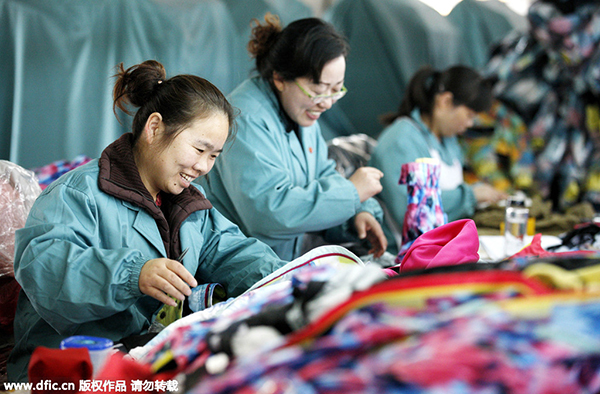China's progress in structural adjustment justifies optimism in its economic prospects
(China Daily) Updated: 2016-02-02 08:39
 |
|
Workers manufacture garment that will be exported to the European Union in Huaibei city, Anhui province, Dec 8, 2015. [Photo/IC] |
At the recent World Economic Forum in Davos, George Soros, the billionaire investor, said that China is headed for a hard landing. A broader view of China's overall economy is needed, says People's Daily:
Data shows that China's contribution to global economic growth remains above 25 percent, even though it has entered a new normal of slower but more sustainable growth. It is also optimizing its economic structure, in which the service sector accounts for 50.5 percent, 10 percentage points higher than the industrial sector.
It is safe, therefore, to conclude that China's economy is on the right track. Just as Jim O'Neill, a former chief economist at Goldman Sachs, said, China's economic growth should be viewed in a broader perspective.
This is a view shared by Stephen Roach, former chairman of Morgan Stanley Asia, who said of a hard landing: "nothing could be further from the truth".
And many more globally renowned experts, such as Sam Walsh from Australia-based Rio Tinto Group, are optimistic about China's economy in the future, pointing to the ongoing urbanization process.
Structural adjustment is inevitable for many economies. Many of them are rather ambitious in making reform plans and inefficient in implementing them. China has done much better because it has accomplished great progress in its structural adjustment while maintaining a relatively high growth rate.
Even though many are pessimistic about it, China is prospering with enhanced welfare, a better economic structure and stable growth.
The global economy is in the process of change and the only way to solve the accumulated problems is reforms and adjustments. Many scholars say it is wrong to underestimate China's ability and determination to profoundly change its economic structure. And they have ample reasons for saying so, as China is bringing the world so many opportunities. No reason to underestimate China just because its growth rate is slower.










